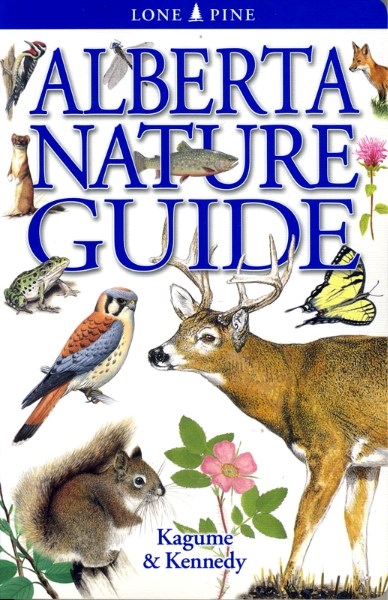Quick! What’s the difference between a downy woodpecker and a yellow-bellied sapsucker? When you see that little brown bird in your pine tree, is it a sparrow, junco or kinglet? Can you tell a mallard from a duck?
These questions and more are exactly the reasons why Lone Pine’s new Alberta Nature Guide is a handy resource for the casual observer out on a nature walk. Even if you’re just gazing out your front window, there is so much for budding naturalists and bookworms to learn, and it isn’t all about birds, either.
Do you really think that you should eat that buffaloberry just growing in the bush? Have you ever considered that there are six types of bat in the province and they’re all oh-so-happy to enjoy eating off the mosquito hordes that have taken over all our soccer fields? What exactly is that strange bug that has been perched out of reach on your kitchen wall for the last three days?
Lone Pine has literally written the book on these kinds of compendium resource materials. They’re my favourites with easy to flip through sections and they contain an encyclopaedic amount of information in a pocket dictionary amount of space.
If you see an animal just walking around, or a new type of flower, or pretty much anything in the natural world of this province, you just go straight to the colour-coded reference guide at the front where beautiful illustrations are laid out.
The Animals section shows most mammals, birds, fish, reptiles and amphibians, and information about invertebrates is also laid out. Right after that is Plants where you can look up trees, shrubs and vines, and forbs, ferns and grasses. I’ve never even heard the word forb before but there it is right there at the front of this book.
By the way, the comprehensive glossary at the back of the book describes a forb as a broad-leafed plant that isn’t grass-like and doesn’t have a permanent woody stem. It loses its aboveground growth each year.
After you find the right animal or vegetable (sorry, no minerals), a reference number takes you to another page for the full entry. You can learn the Latin name of a bison (Bison bison), that juniper berries are actually tiny cones, and that the common dandelion is the most common forb around. You can eat the leaves and flowers, and even boil the roots to make a drink that tastes like coffee but without the caffeine.
You can also read about Alberta’s ecoregions, great wildlife observation points, and get involved with any of the several active nature organizations like the Canadian Parks and Wilderness Society or NatureWatch. All in all, just about the handiest handbook on this subject on the market today.
Review
Alberta Nature Guide
By Krista Kagume and Greg Kennedy
Lone Pine Publishing
224 pages
$21.95




